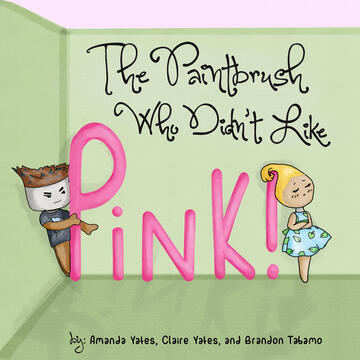
To challenge young minds to explore new worlds, learn about different cultures, and understand complex relationships, teachers often turn to books.
Dr. Seuss’ The Lorax warned about greed and environmental destruction. Winnie the Pooh gives readers a masterclass on loyalty, optimism, and friendship. Meg from A Wrinkle in Time learns to appreciate her uniqueness and creativity.
But what happens when education and art students write such books themselves? Books worthy of display at your local library, not to mention career-building skills for both educators and artists alike, according to two UNLV professors.
Tiffany Lin from the art department and Chad Scott from the teaching and learning department charged their respective students to collaborate to create inspiring children’s literature focusing on diversity, inclusiveness, and equity.

Origin Story
Every semester, Scott’s students explore the depiction of social issues in children’s literature. With COVID-19 driving classes online, however, he sought a way to enhance classroom engagement.
“I thought, ‘Why not have them create their own children’s books?” said Scott. So, he reached out to Lin to join forces.
The project began with education students breaking up into small groups to create characters and a book-length storyline. Once the storylines were completed, each the group teamed up with art and design students to bring their characters and stories to life through visual illustration.
“There was a lot of crossover between students who are interested in getting into storyboarding and art,” Lin said, “so we decided to foster that connection between the two.”
The project also received support from the Gayle A. Zeiter Literacy Development Center and the Nevada Institute on Teaching & Educator Preparation.
Show vs. Tell
As a former K-5 art teacher, Lin understands how difficult it is to explore complex topics like diversity, inclusiveness and equity given the time constraints in elementary classrooms. Showing an abstract concept through a story can be far more effective than trying to explain it.
“Sometimes you don’t have enough time to dive into deep topics, so sometimes the most efficient way is with a story,” she explained. “You’re able to draw students into fiction and then they project themselves into it.”
Valuable Experience

The project was such as success that the Clark County Library turned the books into the “All Are Welcome” exhibition, with displays of the book art and the process behind creating the works.
“The education students were blown away to see their characters come to life. It was a remarkable experience,” said Scott.
Art students gained valuable experience that will help them work with future clients, noted Lin. They learned how to pitch their ideas, collaborate with a client, and meet deadlines. “Most students at that point have not had client experience, so it was a great learning experience for them.”


